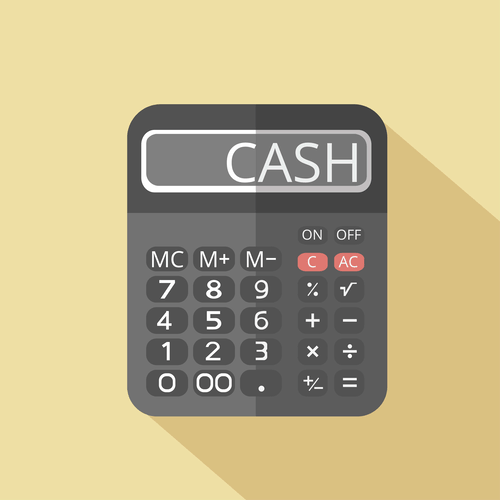
One way to assess how successful a company is in using retained money is to look at a key factor called retained earnings to market value. It is calculated over a period of time (usually a couple of years) and assesses the change in stock price against the net earnings retained by the company. Both revenue and retained earnings are important in evaluating a company’s financial health, but they highlight different aspects of the financial picture. Revenue sits at the top of the income statement and is often referred to as the top-line number when describing a company’s financial performance. Another important aspect of undistributed profit is that it can be used to increase the company’s equity base, which can improve its financial stability and creditworthiness.

Additionally, investors may prefer to see larger dividends rather than significant annual increases to retained earnings. For an analyst, the absolute figure of retained earnings during a particular quarter or year may not provide any meaningful insight. Observing it over a period of time (for example, over five years) only indicates the trend of how much undistributed profits that have accumulated in the company over time are called money a company is adding to retained earnings. Management and shareholders may want the company to retain earnings for several different reasons. Being better informed about the market and the company’s business, the management may have a high-growth project in view, which they may perceive as a candidate for generating substantial returns in the future.
What Is Undivided Profit?
Positive retained earnings signify financial stability and the ability to reinvest in the company’s growth. This usually gives companies more options to fund expansions and other initiatives without relying on high-interest loans or other debt. Other examples where cash is paid out, but the profits are not reduced at the time of the payment, include prepayments of insurance premiums, payments to increase its inventory of merchandise, and payments to reduce liabilities.

A manufacturing company has accumulated a substantial amount of undistributed profit. The management team decides to use a portion of these retained earnings to pay off a long-term loan that was taken out to purchase new machinery. By reducing its debt load, the company lowers interest expenses, which positively impacts its bottom line and financial stability. In its first month of operations, it provides $10,000 of services to its clients and allows them to pay 30 days later. It also incurs $2,000 of expenses of which it pays $1,100 immediately and will pay $900 in 30 days. In its first month, the company had a profit of $8,000 (revenues of $10,000 minus $2,000 of expenses), but its cash decreased by $1,100 (cash receipts of $0 with cash payments of $1,100).
Accounting for undistributed income
Start with a free account to explore 20+ always-free courses and hundreds of finance templates and cheat sheets. The firm and Revenue both agreed that the ‘principal part’ of a company’s income is understood to mean greater than 50% of gross fee income, and this view was accepted by the Tax Appeal Commissioner (‘the Commissioner’). A maturing company may not have many options or high-return projects for which to use the surplus cash, and it may prefer handing out dividends. Profits generally refer to the money a company earns after subtracting all costs and expenses from its total revenues. Shareholders, analysts and potential investors use the statement to assess a company’s profitability and dividend payout potential. It can go by other names, such as earned surplus, but whatever you call it, understanding retained earnings is crucial to running a successful business.
It involves paying out a nominal amount of dividends and retaining a good portion of the earnings, which offers a win-win. All of the other options retain the earnings for use within the business, and such investments and funding activities constitute retained earnings. Essentially, undivided profit refers to corporate earnings that have been allowed to accumulate over a period of time as opposed to being disbursed for other purposes. Yes, having high retained earnings is considered a positive sign for a company’s financial performance. To simplify your retained earnings calculation, opt for user-friendly accounting software with comprehensive reporting capabilities. Cash flow measures the actual value of cash generated by a company, while income is an accounting figure that uses the accrual principle.
What Does It Mean for a Company to Have High Retained Earnings?
My Accounting Course is a world-class educational resource developed by experts to simplify accounting, finance, & investment analysis topics, so students and professionals can learn and propel their careers. If the firm has managed to increase its shareholder equity, retaining its earnings is a good strategy. This reduction happens because dividends are considered a distribution of profits that no longer remain with the company.
Big tech dominance (1): the new financial tycoons – Fondapol
Big tech dominance ( : the new financial tycoons.
Posted: Fri, 19 Mar 2021 11:32:38 GMT [source]
Others are creative interpretations put together by management and their accountants. On one hand, high retained earnings could indicate financial strength since it demonstrates a track record of profitability in previous years. On the other hand, it could be indicative of a company that should consider paying more dividends to its shareholders.
Paying off high-interest debt also may be preferred by both management and shareholders, instead of dividend payments. For this reason, retained earnings decrease when a company either loses money or pays dividends and increase when new profits are created. When a company pays dividends to its shareholders, it reduces its retained earnings by the amount of dividends paid.


